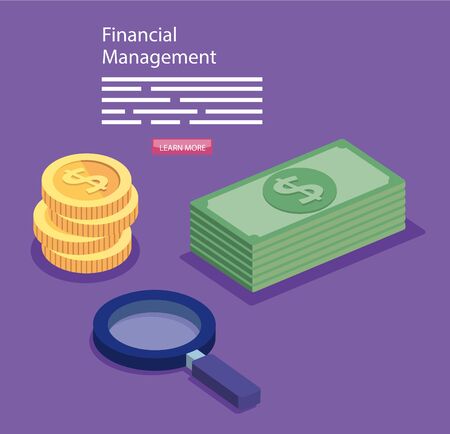1. Understanding the Basics of a 529 Plan
If you’re looking to give your child a head start on college savings, understanding the fundamentals of a 529 plan is crucial. A 529 college savings plan is a state-sponsored investment account specifically designed to help families save for future education expenses. The key advantage of a 529 plan lies in its tax benefits: contributions grow tax-deferred, and withdrawals for qualified education expenses—such as tuition, books, and room and board—are completely federal income tax-free. Many states also offer additional tax deductions or credits for residents who contribute to their state’s plan.
Within the broader context of U.S. education funding, a 529 plan stands out due to its flexibility and impact on financial aid calculations. Unlike custodial accounts or traditional savings, 529 funds are considered parental assets, which generally have a smaller effect on your child’s eligibility for federal financial aid. Furthermore, these plans can be used at any eligible institution nationwide—and even some abroad—including universities, community colleges, technical schools, and now certain K-12 expenses.
It’s important to note that each state offers its own version of the plan with varying investment options and fee structures. However, you’re not limited to your home state’s plan; you may choose any state’s offering that aligns with your financial goals. This flexibility allows you to shop around for low fees or superior investment choices while still reaping the primary tax benefits. In summary, a 529 plan is an efficient, tax-advantaged tool within the American education funding system that helps families systematically prepare for the ever-rising cost of higher education.
2. Researching and Comparing 529 Plans
Choosing the right 529 college savings plan is a critical step in your childs educational financial journey. The U.S. offers a variety of 529 plans, and selecting the most suitable one requires a logical, data-driven approach. Here’s how you can systematically evaluate your options:
Key Factors to Consider
- In-State vs. Out-of-State Plans: Many states offer tax benefits or matching grants if you choose their in-state plan, but some out-of-state plans may provide lower fees or better investment options.
- Fees: Administrative, maintenance, and investment fees can significantly impact long-term returns. It’s essential to compare these costs across different plans.
- Investment Choices: Plans vary in their selection of portfolios—some offer age-based funds that adjust over time, while others allow for custom asset allocation.
- Performance History: Reviewing the historical performance of investment options helps gauge potential future growth, though past performance is not a guarantee of future results.
Comparison Table: Key Features of 529 Plans
| Feature | In-State Plan | Out-of-State Plan |
|---|---|---|
| State Tax Benefits | Often available | Rarely available |
| Fees | Can be higher or lower; varies by state | Potential for lower fees in some cases |
| Investment Options | May be limited to state offerings | Diverse; sometimes broader choices |
| Performance History | Tied to state-selected managers | May access nationally top-performing funds |
| Matching Grants/Scholarships | Occasionally offered to residents | Seldom offered to non-residents |
Action Steps for Parents
- Create a shortlist of both in-state and leading out-of-state plans using reputable resources such as Savingforcollege.com or Morningstar’s annual rankings.
- Carefully review each plan’s disclosure booklet for details on fees, investment lineups, and any residency-based perks.
- If eligible for state tax deductions or credits, calculate the projected savings versus potential higher returns from an alternative plan with stronger performance and lower costs.
- Assess your risk tolerance and long-term goals—age-based portfolios are ideal for hands-off investors, while custom allocations suit those with specific strategies.
- Contact plan administrators if you have questions about enrollment requirements, contribution limits, or qualified expenses.
Bottom Line:
Selecting a 529 plan is not just about picking the one with the lowest fee or the highest return. Instead, use a structured comparison process considering all relevant factors—tax advantages, cost structure, flexibility, and historical performance—to make a decision that aligns with your family’s financial strategy and your child’s educational future.

3. Opening a 529 Account
Step-by-Step: Practical Requirements for Opening a 529 Plan
Starting a 529 College Savings Plan is a straightforward process, but attention to detail ensures you maximize its benefits. Here’s how you can open an account efficiently and in line with U.S. standards:
Eligibility Criteria
Virtually anyone can open a 529 plan—parents, grandparents, relatives, or even family friends. There are no income restrictions or age limits for account owners or beneficiaries. The only major requirement is that the beneficiary must have a valid Social Security Number (SSN) or Taxpayer Identification Number (TIN), making it accessible for most U.S. families.
Required Documents
To set up your 529 account, you’ll need:
- Social Security Numbers (or TINs) for both the account owner and the beneficiary
- Proof of address and contact information for the account owner
- Date of birth for both parties
- Bank account details for initial funding and future contributions
Having these documents ready streamlines the application process and reduces delays.
Naming Beneficiaries
The beneficiary is typically your child or another loved one who will use the funds for qualified education expenses in the future. You can change the beneficiary later to another eligible family member if plans shift—an important feature if your original beneficiary doesn’t need the funds. Clearly identify the primary beneficiary during setup, as this impacts tax reporting and withdrawal rules.
Pro Tip: Double-Check Your State’s Plan Options
While most states offer their own 529 plans, you are not required to use your home state’s program. However, some states provide tax deductions or credits for residents contributing to their state-sponsored plan. Review your options and select a plan that aligns with your savings goals and maximizes available tax benefits.
4. Making Contributions and Setting Goals
Understand Contribution Limits
The IRS does not set a specific annual contribution limit for 529 plans, but there are important federal gift tax considerations. For 2024, you can contribute up to $18,000 per beneficiary annually without triggering the federal gift tax (or $36,000 if you’re married and filing jointly). Additionally, 529 plans allow “superfunding,” where you can front-load five years’ worth of contributions at once—up to $90,000 per child ($180,000 for couples).
| Contribution Type | Limit (per beneficiary in 2024) | Tax Implication |
|---|---|---|
| Annual Gift Exclusion | $18,000 ($36,000 joint) | No gift tax filing required |
| 5-Year Superfunding | $90,000 ($180,000 joint) | File IRS Form 709; no immediate gift tax due if within limit |
Ways to Automate Savings
Consistency is key to maximizing your 529 plan’s growth potential. Most plans offer automatic contribution options that let you schedule regular deposits from your bank account or paycheck. This “set it and forget it” approach helps you stay disciplined and take advantage of dollar-cost averaging.
Popular Automation Methods:
- Direct deposit from employer payroll: Some employers allow direct allocation into a 529 plan.
- Recurring bank transfers: Schedule monthly or quarterly contributions via your plan provider’s website.
- Savings apps: Use third-party apps that round up purchases and invest the change into your child’s 529 account.
Setting Realistic College Funding Goals
Start with an estimate of future college costs using online calculators, factoring in tuition inflation (typically around 5% annually). Set milestones based on your target school types (public vs private) and desired coverage percentage (full tuition, partial, or just fees/books). Adjust your monthly contribution to match these goals.
| School Type | Current Annual Cost (2024 avg.) | Estimated Cost in 18 Years* | Suggested Monthly Contribution** |
|---|---|---|---|
| In-State Public University | $27,940 | $65,000+ | $250–$300/month |
| Private University | $57,570 | $135,000+ | $500–$600/month |
*Assumes 5% annual increase
**Assumes starting at birth with a moderate investment return (6%)
Engaging Family Members in Gifting
A great way to accelerate savings is to invite grandparents and other relatives to contribute. Many 529 plans offer gifting platforms with e-gift cards or shareable links for birthdays and holidays. Make it easy for family members by sending reminders before special occasions or including the plan information on invitations.
5. Managing Investments and Monitoring Performance
Selecting the Right Investment Portfolio
When it comes to managing your child’s 529 College Savings Plan, one of the first key decisions is choosing an investment portfolio that aligns with your financial goals and risk tolerance. Most U.S. 529 plans offer a range of investment options, including age-based portfolios that automatically adjust risk levels as your child nears college age, as well as static portfolios that maintain a consistent asset allocation. Consider factors such as your childs current age, your expected timeline for withdrawals, and how comfortable you are with market fluctuations when selecting an option.
Making Changes Over Time
Your financial situation and market conditions can change over the years, so it’s important to regularly review your investment choices. U.S. regulations allow you to change your 529 plan’s investment allocation twice per calendar year or whenever you change the beneficiary. If you started with an aggressive growth strategy while your child was young, you might want to shift toward more conservative investments as college approaches, helping to protect against market downturns when you’ll need the funds.
Utilizing Account Management Tools
Most 529 plans provide online dashboards and account management tools designed to help you stay on top of your investments. These platforms typically allow you to track performance metrics, set up automatic contributions, and access resources for rebalancing your portfolio. Take advantage of alerts and reporting features to monitor fund growth and ensure contributions are on track with your college savings target. Many plans also offer mobile apps for easy access on the go.
Staying Informed: Best Practices
To maximize your 529 plan’s performance, make it a habit to review your account at least once a year or after significant life changes. Stay informed about fees associated with different investment options, as lower costs can result in higher long-term returns. Keep an eye on legislative updates affecting tax benefits or contribution limits for U.S. 529 plans, ensuring you’re always leveraging the full advantages available to American families.
6. Using Funds and Staying Compliant
Qualifying Withdrawals: What Counts as a Qualified Expense?
When it’s time to use your 529 plan, understanding what expenses are considered qualified is essential to maximize benefits and avoid unnecessary taxes or penalties. Qualified expenses include tuition, fees, books, supplies, computers and internet access if required by the school, and room and board for students enrolled at least half-time. Always keep receipts and detailed records of these expenditures to substantiate your withdrawals in case of an IRS audit.
Coordinating with Financial Aid: Avoiding Double Dipping
Withdrawals from a 529 plan can impact your child’s eligibility for need-based financial aid. The distribution is typically reported as student income on the FAFSA (Free Application for Federal Student Aid), which may reduce aid eligibility in subsequent years. To minimize this effect, consider timing withdrawals strategically—such as using 529 funds for the last two years of college—or coordinating with your child’s financial aid office to understand how distributions will be treated. Make sure you don’t claim the same educational expense twice if you’re also utilizing tax credits like the American Opportunity Tax Credit or Lifetime Learning Credit.
Staying Compliant: Following IRS Rules
Adhering to Withdrawal Timing
For a withdrawal to be considered qualified, it must occur in the same calendar year that the educational expense is paid. Mismatched timing can lead to non-qualified withdrawal penalties.
Avoiding Penalties on Non-Qualified Withdrawals
If you withdraw more than the qualified amount or use funds for non-approved purposes, earnings from those withdrawals are subject to federal income tax and a 10% penalty. Exceptions exist for cases such as scholarships, disability, or attending a U.S. service academy, but documentation is critical.
Annual Review and Communication
Conduct an annual review of your 529 account statements, stay updated on IRS regulations (which may change), and communicate regularly with your plan provider and tax advisor. This proactive approach ensures compliance and helps you optimize every dollar saved for your child’s education.

